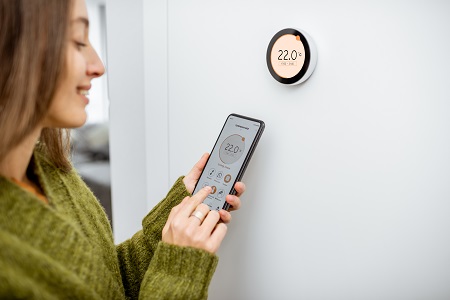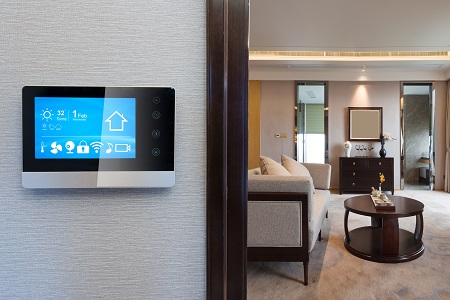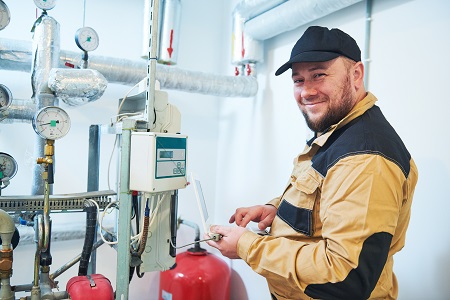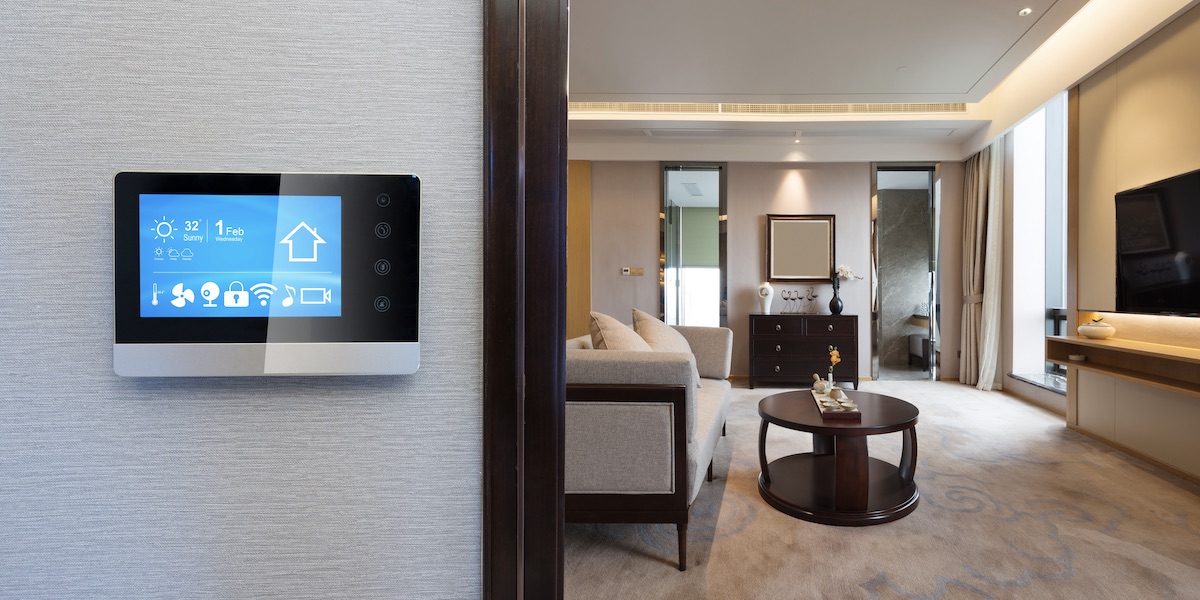At the end of the day, we all want to save money. And where better to optimize the value for money than on our utility bills. Did you know the type of thermostat can help you save money and keep your house at a comfortable temperature? There are many different types of traditional thermostats but the most popular ones in use today are the smart thermostat. What is a smart thermostat, you ask? Well this article will walk you through:
- Differences between a traditional thermostat and a smart thermostat
- Benefits of using a smart thermostat
- Highly rated popular options available for purchase
- Generic instructions for how to install one of these options
- Common issues with smart thermostats
- Answers to frequently asked questions
Knowing how your new smart device works is to know how the various integrated controls and thermostat settings work. Understanding how you to use them effectively during energy events will help reduce your energy bills. To learn more on how to understand a smart thermostat at a glance or how to schedule heating and cooling periods according to the seasons, read on.
What is a Smart Thermostat?

Smart thermostats have gone on sale everywhere nowadays. You might have seem some for sale at your nearest home improvement store and wondered what exactly makes them so smart. These devices are essentially digital thermostats that can communicate with other devices in your home through Wi-Fi. They use a simple interface that consists of four buttons:
- On/Off
- Up/Down arrows for changing the temperature
- Menu
- Home/Away
The last two buttons access more advanced features, like turning on a vacation mode and setting how long the system should wait before turning off when nobody is home, or how often it should turn on to check if someone has come back.
What is the Difference Between Digital and Analog?
The differences between analog and digital thermostats are both functional and visual. Analog thermostats are traditional with a round dial that is usually set to one temperature for the entire day. They have no ability to link up with internet or phones, but some more advanced models can be programmable. They are effective at heating, but won’t take the environment into consideration. If the current temperature dips below a threshold, it will expend a massive amount of energy just to return the room to preset level even if no one is home.
Digital thermostats have an LCD display screen with individual buttons for each time period throughout the day, allowing you to choose when you want your heating or cooling system to be on. This new school programmable thermostat can control your heating and air conditioning via mobile device, touch screens and voice control.
What are the Benefits of Smart Thermostats?
One of the best things about digital thermostats is how much easier it is for you to set your heating and cooling periods, since all that needs to be done on a round dial would take more time. It’s easy enough just looking at the screen instead of having to turn a knob or move through menus like in an analog thermostat. It is designed to be instantly comprehensible and easy to read.
Remote sensors can also be placed in rooms to allow for your HVAC system to heat or cool a certain area of the house. They cost slightly more in energy usage, but the balance of comfort make these the perfect option for rooms that have a naturally higher or lower ambient temperature than the rest of the house.
Furthermore, some units have a way of connecting to your Wi-Fi or Internet and downloading data, which can be used in the future for how you use your heating/cooling system. With a Wi-Fi connection you can control your HVAC system from your seat, your work or anywhere else you are in the world. It might seem superfluous but this feature can save you money when out on vacation or away at work.
While a smart thermostat is an expensive purchase, they usually can pay for themselves within a year even if you hire a professional installer to set up the system. Eventually they even begin to adapt to your behavior over time to understand how to heat your home.
Take caution, however; if it turns out the thermostat is not compatible with your HVAC system you will need to either buy a different thermostat or upgrade the system. This might save you money in the long-term but it will be a painful purchase. To avoid this unforced error, it’s best to chat with the experts about making sure your home’s HVAC system works will work with a new thermostat before buying one.
What Brands of Smart Thermostats Are Available?

There are plenty of options for smart thermostats out on the market including the Google Nest, Ecobee, Emerson and Honeywell.
The Google Nest thermostat is the most popular option among homeowners who have self-installed their smart thermostat. It has a lovely circular interface with an animated screen that displays how warm or cold your home will be at different times of day according to how you set it up. Nest even sells indoor air quality sensors to warn of carbon monoxide poisoning or fire.
The Ecobee is another popular brand of smart thermostat that has a sleek and somewhat more minimalist interface than the Nest. Ecobee also offers other products, including room sensors to help regulate how much heat is coming out of your radiator specifically in those rooms and adjust the heating or cooling on a room-by-room basis.
The Emerson Sensi Touch comes with an easy-to-read display screen and a touchscreen that allows you to control your thermostat from anywhere in the world. Emerson even offer installation videos and information on how to do it yourself.
The Honeywell Lyric T is another option from the HVAC giants of Honeywell. Many classic thermostats are sold by Honeywell and their foray into the smart thermostat market offers plenty of how-to videos for those who want to install it themselves.
How to Install a New Smart Thermostat
With the introduction of how-to videos and online guides most smart thermostats are easy enough to install by yourself nowadays. For the tech-adverse, however, your local HVAC experts can set up your smart thermostat and help you connect it to your smart home system. One thing to consider is that, with the many different kinds of smart thermostats, each comes with their own installation process. Here is a basic checklist for installing a generic smart thermostat:
- Unscrew the old thermostat by hand or use pliers
- Install new mounting plate and screws (provided in the kit) onto wall studs using a stud finder
- Connect wire leads to the wires coming from the wall and screw them into place with a Phillips head screwdriver
- Follow the manufacturer’s instructions for start up, pairing and connecting to the internet and phone application.
At this point you will be able to control your HVAC system remotely using the mobile app, adjusting your HVAC system for peak rebate times and other events in order to save on your power bill and stay energy efficient.
Common Problems With Smart Thermostats
Unfortunately not all furnaces are compatible with smart thermostats. If a furnace is particularly old, it might not have the power or interface to communicate with the thermostat properly. This can result in poor connectivity, low battery and an inability to control which mode you want your HVAC to work in. Either a quick trip licensed technician from your local heating and cooling company can help you troubleshoot these issues:
- Thermostat has poor connectivity
- Low battery warning keeps appearing on the display
- Cannot set manual temperature
- Fan setting constantly switches from auto to manual mode
- Smart thermostat won’t sync with WiFi
- Voice control will not work properly
Frequently Asked Questions

Are smart thermostats easy to install?
Yes, there is a how-to guide on how to do this. Basically you will need your new thermostat and the installation kit that comes with it. There are some screws included too if you don’t have any of these items already in place for your old thermostat device. You’ll want to look at how your old thermostat was installed and match up the holes.
How do I change my temperature?
This is a two-step process, first you need to turn on the AC or heat as needed for the room, then you can use your new smart device to raise or lower the temperature.
How do I set up my heating and cooling schedule?
This is how the smart thermostat will work to control your heating and cooling. You can set up a schedule for heat or cool air, like “Monday-Friday from 11am to 7 pm” on your mobile device, by using voice controls or manually setting it up on the thermostat. The device will then automatically turn on those periods of time where it’s needed.
Need Help Choosing, Installing or Upgrading your HVAC System?
If you want to beat the heat in the Portland area this summer and are looking for an HVAC company to help with your thermostat, Tri-Tech Heating is here! Our team of experts are ready to teach how smart home technology will help you reduce energy consumption and increase energy savings. There are a perplexing amount of options and things to know when choosing a new control system for your heating or cooling needs. Our goal is always to make sure our customers have all the information they need so they feel confident about their purchase decision. Whether you want to install a thermostat yourself or would rather hire us as pros, we’ll find a solution that best meets your needs. Let’s get started!

